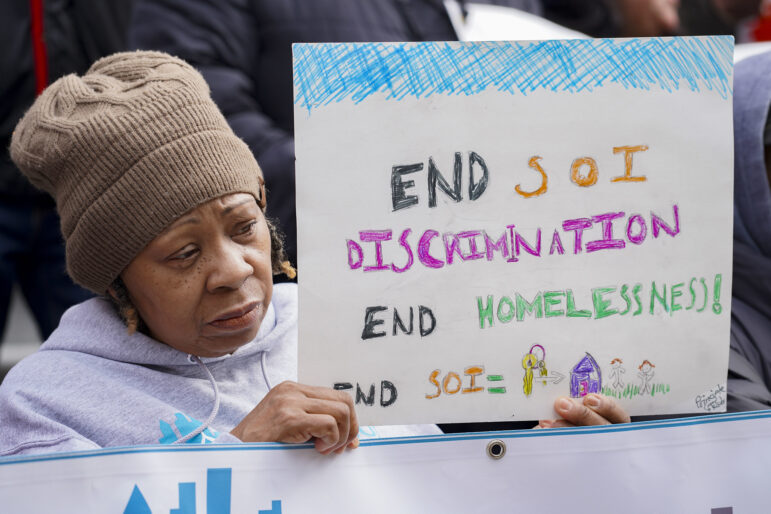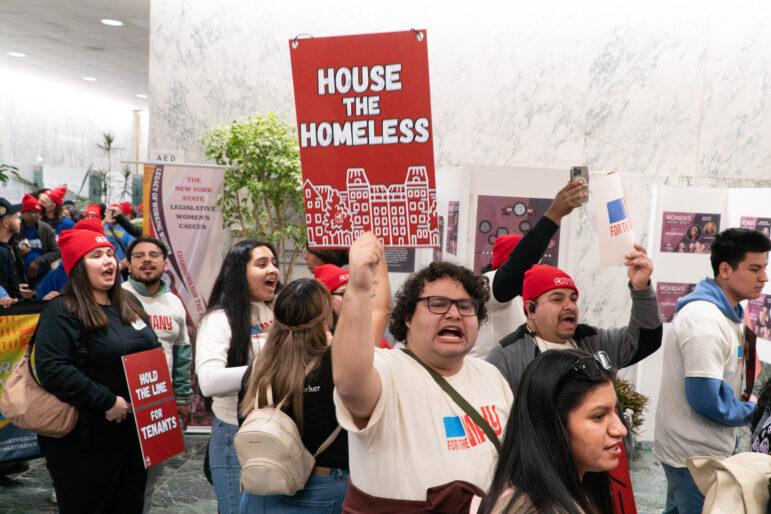
DCP
The three parcels would be built to 72, 69 and 62 stories.
There was intense opposition to a trio of high-rises planned for the Lower East Side waterfront at a Thursday hearing where the process was as much a target as the proposals.
The four buildings at 247 Cherry Street, 260 South Street and 259 Clinton Street would rise 62 to 72 stories*, and create a combined 2,775 apartments, about 700 of them income-targeted—adding more than 2.5 million square feet of residential development to the area known as Two Bridges.
Despite the dramatic change the developments would deliver, the Department of City Planning has decided that the proposals do not need to go through the full Uniform Land-Use Review Procedure, or ULURP. That seven-month process involves advisory votes by the local community board and borough president as well as final action by the City Council. The de Blasio administration’s neighborhood-wide rezoning proposals in places like East Harlem and Downtown Far Rockaway are going through ULURP.
The Two Bridges high rises could not be built without action by the City Planning Commission to change the rules governing development on those parcels. But the Department of City Planning has determined those changes constitute a “minor modification,” not the “major” one that would trigger ULURP. According to the department, while the new buildings would add significantly to the built environment on the waterfront, they do not involve any addition to the bulk or density of what is legally allowed there.
That finding was not persuasive to many who spoke on Thursday.
“I am shocked by the proposal of these out-of-scale developments,” Councilmember Margaret Chin testified, noting, “these developments would add thousands of new residents.”
“We asked for a full ULURP process to ensure all voices are heard, but the Department of City Planning said no.”
“This is not a minor modification,” said Hunter professor and longtime DCP critic Tom Angotti. “You’re dumping 70 story buildings and 2.5 million square feet of residential space into two blocks. There must be a full ULURP.”
Instead of a ULURP process, the community board will hold a hearing and take an advisory vote on the proposal, and the City Planning Commission will consider and then approve or deny the request for modifications. That approach is more elaborate than what normally occurs when ULURP is not used, but it deprives the two local elected officials that represent the area, Chin and Manhattan Borough President Gale Brewer, a formal role. Brewer would have an advisory voice via ULURP, and Chin would—by City Council custom—have final say.
The towers will bring “more growth in a 36 month period than the neighborhood has seen in 30 years,” Brewer said.
As the Two Bridges review process rolls out, an environmental impact statement covering all three sites will be prepared, ostensibly to identify problems the buildings might cause and ways that impact might be mitigated.
Thursday’s hearing was officially an opportunity to comment on the draft scope of that environmental study, and speakers raised concerns about the risks of climate change to a waterfront development, the impact of the project infusion of residents on police and fire services, the burden that the new housing will place on the Newtown Creek sewage plant and more.
But others focused not on the environmental review process—which, bound by highly technical rules, often produces results that clash with real-world observations and imposes no strict demand on planners or developers to address any problems it does detect—but on the proposals themselves.
“If this thing goes through, I don’t know how you guys can sleep at night,” said Ann McDermott, an Upper East Side resident. “New York is turning into Dubai on the Hudson. All these people who live there kept that neighborhood alive when nobody wanted to even look at the Lower East Side and now are being pushed out by the policies of this administration.”
The deeper frustration is that in a city where neighborhood-wide rezonings are being pursued all over the map, the de Blasio administration has rebuffed a community proposal seven years in the making that would have rezoned a large swath of Chinatown and the Lower East Side, including the Two Bridges waterfront.
Backers said that Chinatown Working Group plan would prevent the loss of neighborhood character and protect low-income tenants, but the administration said the vision covered too large a geographic neighborhood.
Instead, de Blasio’s DCP has said it will consider rezoning Chinatown’s core, although it has yet to define that geographic area.
* Correctional: The original version of those story misreported that three buildings are planned. In fact, four are: a 79-story building at 247 Cherry Street, towers of 62 and 69 stories at 260 South Street and a 62-story building at 259 Clinton Street.










One thought on “Calls for Stricter Review of Proposed Waterfront Skyscrapers”
“I am shocked by the proposal of these out-of-scale developments,” Councilmember Margaret Chin testified, noting, “these developments would add thousands of new residents.” “We asked for a full ULURP process to ensure all voices are heard, but the Department of City Planning said no.”
Why ask for ULURP when Chin can (1) fully support the Chinatown Working Group rezoning plan without dividing Chinatown from Lower East Side, (2) call on de Blasio to pass the entire plan, and (3) rally the Chinese, Latino and Black bloodsucking big business owners and landlords (which Chin has connections with and which she herself is one) to back the CWG plan?
Last year, an article came out from Politico on December 20, titled “City Council members explain early endorsement of de Blasio,” the first thing the article mentioned was that De Blasio was facing state and federal investigation into his political fundraising operation. Before Preet Bharara was fired by Donald Trump and the investigations on De Blasio being dropped, De Blasio came out with a list of endorsements from 7 city council members. This included: Margaret Chin, Brad Lander, Stephen Levin, Donovan Richards, Ydanis Rodriguez, Helen Rosenthal and Ritchie Torres. Chin, Lander, Levin, Richards and Rodriguez all backed De Blasio in 2013, and they are backing him again. (see the article here: http://www.politico.com/states/new-york/city-hall/story/2016/12/de-blasio-rolls-out-council-endorsements-tk-108208 1/4)
De Blasio has refused to pass the CWG plan. If the CWG plan was passed, it would have blocked the waterfront developments. Chin supports De Blasio who supports all these luxury LES waterfront developments, but she is now calling on Department of City Planning for a full ULURP and wait a while to hear the “community voices”. She wants the city to wait to hear community voices but couldn’t wait to endorse De Blasio? Let’s be clear: Chin did not wait and endorsed a mayor who was being investigated. I want to ask Margaret Chin: Do you want luxury tall buildings on waterfront or not? Do you want a mayor who will support these tall buildings or not?
If you do want luxury tall buildings and if you do want a mayor who are all-in for developers, then you should be honest in your words, state what your interests are, and state who you are truly representing. People see through your lies. You go around telling people “community voices” should be heard, but turn around and endorse a for-developers mayor? A mayor who is directly tied to L+M who is building on SPURA and the LES Waterfront? Who is directly tied to privatization of public assets?
What community voices? Landlords form a community. Big businesses form a community. Your non-for-profit Chinese and Latino poverty pimps form a community. But all of them are backing De Blasio and backing developers. To wait a month or two and to only to hear from them? You are saying that, it is okay for LES/Chinatown Chinese, Latinos and Blacks to be discriminated against and displaced, as long as, we know that we are being displaced and discriminated against.
Stop pretending – “I am shocked by the proposal of these out-of-scale developments”
You wanted it and you knew they were coming for years. Why is this shocking? You mean you are shocked because your friend Shelly is about to be in jail and all these developers are still able to build? Or you are shocked that you are not getting a slice of the pie? How can the developers build without you and the Chinese and Latino landlords?